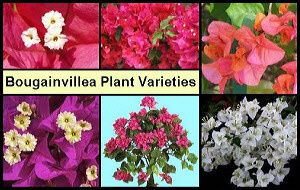 Plant Summary
Plant Summary
Botanical Name: Bougainvillea glabra
Type: Flowering
Origin: Brazil
Height: If left to grow without pruning, Bougainvillea Plants can grow to staggering heights of up to 4.5 m (15 ft). They are, however, suitable for growing as Bonsai trees.
Soil: Any quality potting mix will be sufficient for this plant.
Light: This plant needs full sun and should be given a minimum of four hours of direct sunlight every day.
 Humidity: Bougainvillea Plants are quite happy with average levels of humidity.
Humidity: Bougainvillea Plants are quite happy with average levels of humidity.
Temperatures: The plant does not appreciate cold at all, so it must be kept indoors if temperatures are likely to drop below 16 degrees C (60 degrees F) at night. Generally speaking, temperatures between 16 and 27 degrees C (60 to 80 degrees F) are acceptable.
Water: After watering the plant thoroughly, the drainage tray, saucer under the pot should be emptied to prevent the soil from becoming soggy. The top 5 cm (2 in) of soil should be allowed to dry out before watering again.
Fertiliser: Feed a 1:1 water/ liquid high phosphorous fertiliser solution to the plant once a fortnight from spring into autumn.
Propagation: Stem tip cuttings of approximately 10 cm (4 in) can be taken in spring and need to be rooted in moist soil. A heat mat will be required for optimal propagation results. In theory, the cuttings should root within around two months.
 Description and Care Tips
Description and Care Tips
While Bougainvillea Plants can typically be found climbing arbours and scrambling over stone walls, or spilling luxuriously out of terra cotta containers in places like Greece, Mexico or Southern California, they are just as at home in colder climates if placed into a sunny window, a sun room or a green house.
Moving this tropical plant out onto a patio or porch during the hot summer months will, however, really get it to thrive and produce an abundance of large clusters of orange, pink, red or purple, papery bracts surrounding creamy white, small flowers. Beautiful as they are, they have to be handled with care, as the long arching branches of the Bougainvillea are covered in thorns likely to irritate skin.
 After the flowers fade in autumn, the plant can be pruned back to prevent it from becoming too leggy. Alternatively, it can be trained over a trellis or around a hoop. If required, it can be tied into place using a little florist's wire, but as a rule, this vigorously climbing plant rarely needs any help to twine around any kind of support it can get hold of, so to speak.
After the flowers fade in autumn, the plant can be pruned back to prevent it from becoming too leggy. Alternatively, it can be trained over a trellis or around a hoop. If required, it can be tied into place using a little florist's wire, but as a rule, this vigorously climbing plant rarely needs any help to twine around any kind of support it can get hold of, so to speak.
When new growth appears in spring, it is time to consider repotting, although the plant produces the best blooms when slightly pot bound, so a new pot should not be more than one size larger than the one from the previous year.




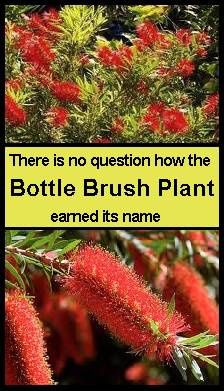 Plant Summary
Plant Summary  Water: Allowing the plant to dry out a little between watering sessions, water the plant thoroughly from spring into autumn, cutting the amount of water down in winter. As the plant is tolerant to droughts, it is better to err on the dry side, rather than taking the risk of over watering.
Water: Allowing the plant to dry out a little between watering sessions, water the plant thoroughly from spring into autumn, cutting the amount of water down in winter. As the plant is tolerant to droughts, it is better to err on the dry side, rather than taking the risk of over watering.  The upright flower spikes of the Bottle Brush Plant emerge from spring into summer, as long as plenty of light is provided. These flowers do not have petals, but consist of yellow tipped, bright red stamens that cluster on the up to 10 cm (4 in) long flower spikes. A tuft of leaves tops each fuzzy spike.
The upright flower spikes of the Bottle Brush Plant emerge from spring into summer, as long as plenty of light is provided. These flowers do not have petals, but consist of yellow tipped, bright red stamens that cluster on the up to 10 cm (4 in) long flower spikes. A tuft of leaves tops each fuzzy spike.  In the winter months, the Bottle Brush Plant needs to be given a rest, with temperatures not falling below 7 degrees C (45 degrees F) and watering cut down to a minimum. Repotting is typically only required once every couple of years or so, and keeping the plant in the same size pot will control the size it will grow to.
In the winter months, the Bottle Brush Plant needs to be given a rest, with temperatures not falling below 7 degrees C (45 degrees F) and watering cut down to a minimum. Repotting is typically only required once every couple of years or so, and keeping the plant in the same size pot will control the size it will grow to.  Plant Summary
Plant Summary  Description and Care Tips
Description and Care Tips  Repotting is done in spring, usually when the roots have filled the pot. The new pot should be only slightly bigger than the old one. To control the size of the plant, trimming away some (about a quarter) of the root ball and placing the plant in the old pot will keep it at the desired size. This is also a good time to divide the fern into several separate plants.
Repotting is done in spring, usually when the roots have filled the pot. The new pot should be only slightly bigger than the old one. To control the size of the plant, trimming away some (about a quarter) of the root ball and placing the plant in the old pot will keep it at the desired size. This is also a good time to divide the fern into several separate plants. 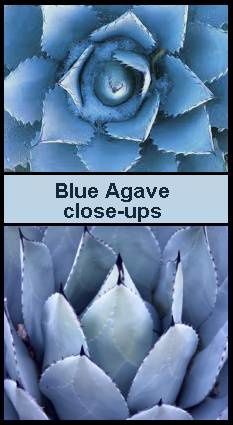 Plant Summary
Plant Summary  Description and Care Tips
Description and Care Tips  Moving the plant in and out of the sun should, by the way, be done gradually to accustom the plant to higher/ lower light levels slowly. Naturally, it is perfectly acceptable to keep the plant indoors all the time, as long as it is placed somewhere where it gets lots of sunlight, such as, for instance, in front of a south or west facing window.
Moving the plant in and out of the sun should, by the way, be done gradually to accustom the plant to higher/ lower light levels slowly. Naturally, it is perfectly acceptable to keep the plant indoors all the time, as long as it is placed somewhere where it gets lots of sunlight, such as, for instance, in front of a south or west facing window. 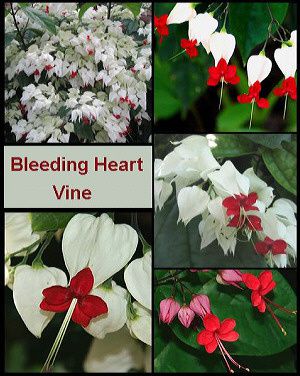 Plant Summary
Plant Summary  Description and Care Tips
Description and Care Tips  Keeping humidity levels up will help to prevent spider mite invasions. It is important to look out for theses pests, especially during the winter months, when rooms tend to be drier.
Keeping humidity levels up will help to prevent spider mite invasions. It is important to look out for theses pests, especially during the winter months, when rooms tend to be drier. 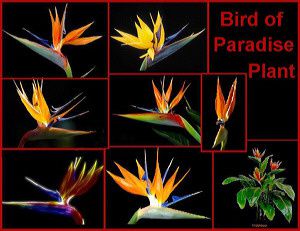 Plant Summary
Plant Summary  Description and Care Tips
Description and Care Tips  New plants should be repotted in summer each year, just until they reach a height of approximately 90 cm (3 ft). After this, only top-dressing the soil will be necessary, as the plant will not bloom unless it is almost root bound.
New plants should be repotted in summer each year, just until they reach a height of approximately 90 cm (3 ft). After this, only top-dressing the soil will be necessary, as the plant will not bloom unless it is almost root bound.  Plant Summary
Plant Summary  Description and Care Tips
Description and Care Tips  As the plant ages, the outer, older fronds will begin to turn brown. They can be cut off from the base to keep the fern looking tidy. When the roots fill the pot, or every couple of years, the plant should be repotted, preferably in spring. Obviously, a container with adequate drainage holes to prevent soggy soil should be used.
As the plant ages, the outer, older fronds will begin to turn brown. They can be cut off from the base to keep the fern looking tidy. When the roots fill the pot, or every couple of years, the plant should be repotted, preferably in spring. Obviously, a container with adequate drainage holes to prevent soggy soil should be used.  Plant Summary
Plant Summary  Description and Care Tips
Description and Care Tips  The soil needs to be kept moist at all times, as allowing it to dry out will leave the plant susceptible to diseases. It should not, however, allowed to become soggy. If over-watered, the leaves of this plant will turn yellow and wilt. Affected leaves should be removed immediately, as leaving them in place will cause rotting and attract fungus.
The soil needs to be kept moist at all times, as allowing it to dry out will leave the plant susceptible to diseases. It should not, however, allowed to become soggy. If over-watered, the leaves of this plant will turn yellow and wilt. Affected leaves should be removed immediately, as leaving them in place will cause rotting and attract fungus.  It is, none-the-less, possible to encourage the plant to flower again. Once flowering has finished, watering should be cut down, without allowing the soil to dry out altogether. During this period, the plant should be kept out of the light. The foliage will begin to die back within 6 to 8 weeks. It can then be pruned away, leaving 7.5 cm (3 in) long stems.
It is, none-the-less, possible to encourage the plant to flower again. Once flowering has finished, watering should be cut down, without allowing the soil to dry out altogether. During this period, the plant should be kept out of the light. The foliage will begin to die back within 6 to 8 weeks. It can then be pruned away, leaving 7.5 cm (3 in) long stems.  Plant Summary
Plant Summary 
 Description and Care Tips
Description and Care Tips  The best time to repot a Baby's Tears plant when it outgrows its container is in spring. Naturally, although this plant loves moisture, soggy soil is not a good thing, so a pot with drainage holes should be used.
The best time to repot a Baby's Tears plant when it outgrows its container is in spring. Naturally, although this plant loves moisture, soggy soil is not a good thing, so a pot with drainage holes should be used.  Plant Summary
Plant Summary  Description and Care Tips
Description and Care Tips  Repotting will only be necessary once every three years or so, as this plant flowers better when it is a little pot bound. Repotting should always be done after flowering has ended, and pots with drainage holes must be used.
Repotting will only be necessary once every three years or so, as this plant flowers better when it is a little pot bound. Repotting should always be done after flowering has ended, and pots with drainage holes must be used.